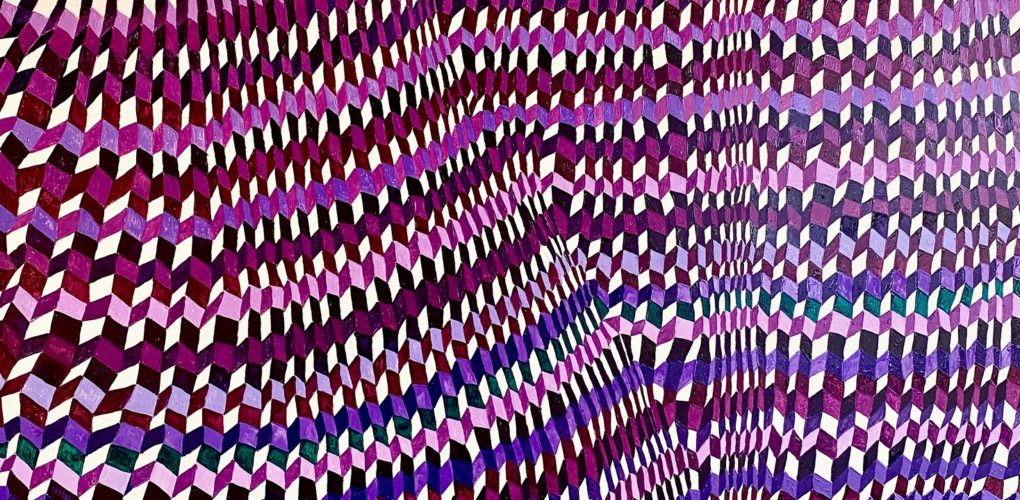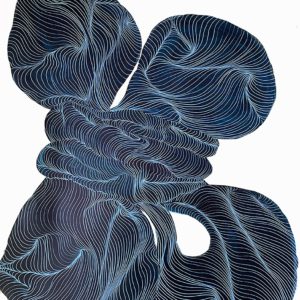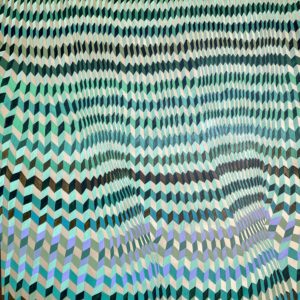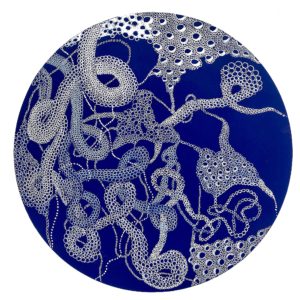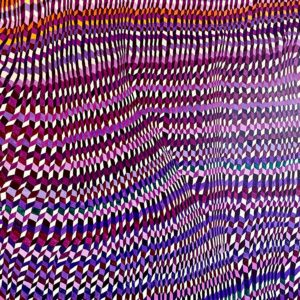Art News
 Meet the Others: Sara Willett
Meet the Others: Sara Willett
The Game Changers. The Rule Breakers. The Innovators. Discover some of the fantastic emerging talent showcasing their work at The Other Art Fair.
Meet Sara Willett, a London-based visual artist from who is exhibiting at The Other Art Fair London this March 17-20, 2022. We spoke to Sara ahead of the Spring Edition to find out more about her practice…
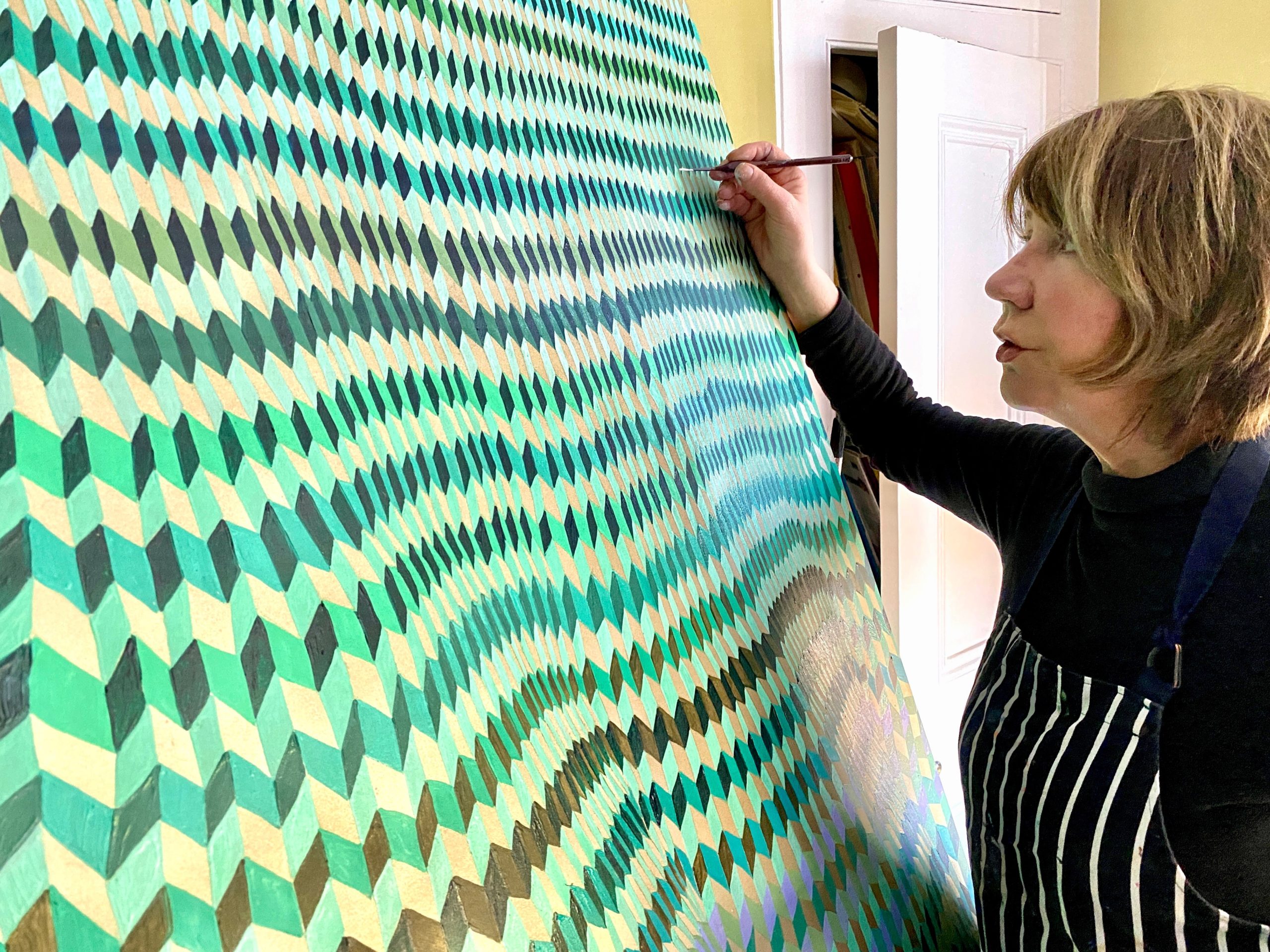
What can audiences visiting the Fair expect from your booth curation?
Although I have not yet decided on my final booth curation, I am excited to be participating in the Other Art Fair in March, particularly as it presents an opportunity to show work from 3 distinct series of paintings that I have been developing over the past 2 years.
The Fabrication series is a continuation of my interest in pattern, fabric and textile – in this instance the work of the 20th century female pioneers, Barbara Brown (1960’s Heals wallpaper), Enid Marx and Joy Jarvis (iconic London transport moquettes). These paintings mimic the way that movement in fabric can subtly undermine the integrity of the geometric pattern, the shifts and undulating rhythms creating new possibilities and optical uncertainty. The potential in painting to slow time and simultaneously combine a sense of stillness with movement is something that has always intrigued me.
The Drawing Breath series was a response to the strange and uncertain landscape where we found ourselves in early 2020. Levels of anxiety were high and like many others I practiced deep breathing techniques. I tried to envision both the external and the internal breath, the former more fluid and ephemeral, the latter, twisted and compressed. It was only when I stepped back from the work that I noticed how the internal breath images also resembled a hug or embrace. Our human need for contact and connection has never been more significant and I guess this came through subconsciously in the imagery.
During lockdown the Blue World series evolved to represent an internal and fragmented dreamscape, evoking both the macrocosmic structure of the universe and the microcosm of elemental particles. The idea of looking down on the world from high above also comes into play, recalling the early photos of earth from space. The mystery and fragility of the world has obviously been on our minds recently, so the delicacy of the rice paper that I used seemed particularly appropriate. They were soothing and calming works to make in a time of turmoil.
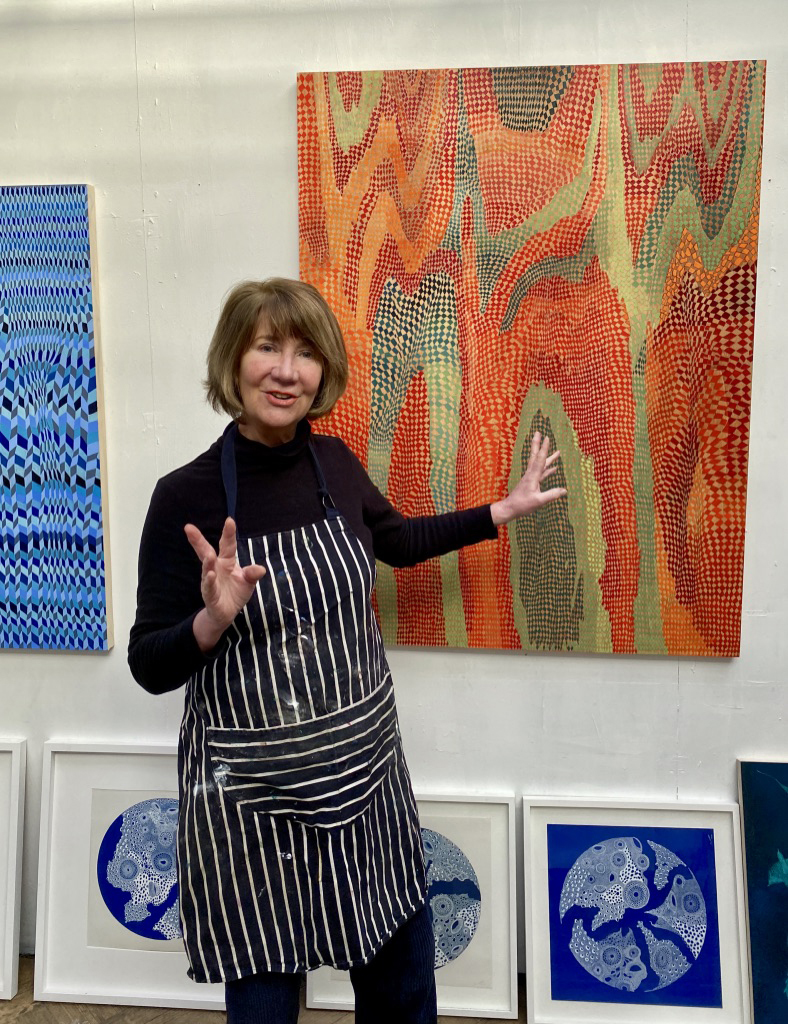
Tell us a little about your process and materials used in creating your artworks…
At present I am mainly working in 2D on wood and paper – although the boundary between 2 and 3D is something I explore, and I have previously worked with installation and sculptural work. The subject and intention of the work will always inform the material that is used.
The Fabrication series uses pigment rich oil paint and glazes on wood to imbue the paintings with depth, glow, and bold colour. Although it might not be immediately apparent, the final image is underpinned by multi-layered web structures which dictates the rhythm and flow. The process I have developed consists of both systematic repetition and conscious intuition. There are four paintings in the series, each completed during a different season of the year – on reflection I can now see that this subtly influenced the colour palette of each one.
Using ink on watercolour paper to create fluid shapes, the Drawing Breath series, was made intuitively, allowing the ink to flow in a way that felt organic and spontaneous. The process slowed down when I returned to add the lines that bound the shapes. Each line corresponded to a slow inhale and exhale – an attempt to visualise the act of breathing. I found the ebb and flow of the lines meditative, taking me outside myself – the slowness of the process became hypnotic.
The Blue World ink series is made on Xuan calligraphy paper, brought back from a residency in Southeast China and was initially inspired by the topology of the Fujian rice terraces. It is possibly the most meditative and introverted of all the work I have been making recently. The repetition of the cellular ink marks on the deep blue circular background, evolves organically to create a range of ambivalent images, suggesting bacterial organisms viewed under the microscope or solar systems viewed from a telescope.
How were you introduced to painting and where do you source inspiration from?
I was lucky enough to have been introduced to painting by my mother who loved art and regularly took us kids to the Tate Gallery (in those days there was just the one Tate). Early memories include running excitedly to see our childhood favourite – Magritte’s Time Transfixed, which introduced us to the magical possibilities of painting. I also recall sitting in front of Rothko’s Seagram paintings (again at the Tate), immersed in the hypnotic stillness, not questioning why or how this was achieved – just experiencing it.
The works that had a profound influence on my development as an artist were the early Infinity Net paintings of Kusama and I Sei Sensi by Alighiero e Boetti. Both artists created these paintings from the incremental repetition of small marks, resulting in something monumental – far greater than the sum of its parts. They introduced me to the alchemy of painting something that continues to intrigue me.
I’ve been fortunate enough to have experienced three life changing residencies in Southeast China and in Beijing. These undoubtedly influenced by work, especially the more recent ink work. In terms of source material, I have already mentioned the influence of textile and pattern, however I do believe that everything we experience visually or sensually will remain within us, sometimes finding its way back from the subconscious to the conscious. So, influences could range from the quotidian – a piece of frayed lace, the soapy puddles from a car wash, to awe inspiring images from the Hubble telescope or of deep-sea creatures. The interconnectedness of everything we do and all the encounters we have, has never been more important and apparent to me, so it was wonderful to have recently discovered Carlo Rovelli’s Seven Brief Lessons on Physics – the poetically elegant lay introduction to the beauty and splendour of modern physics.
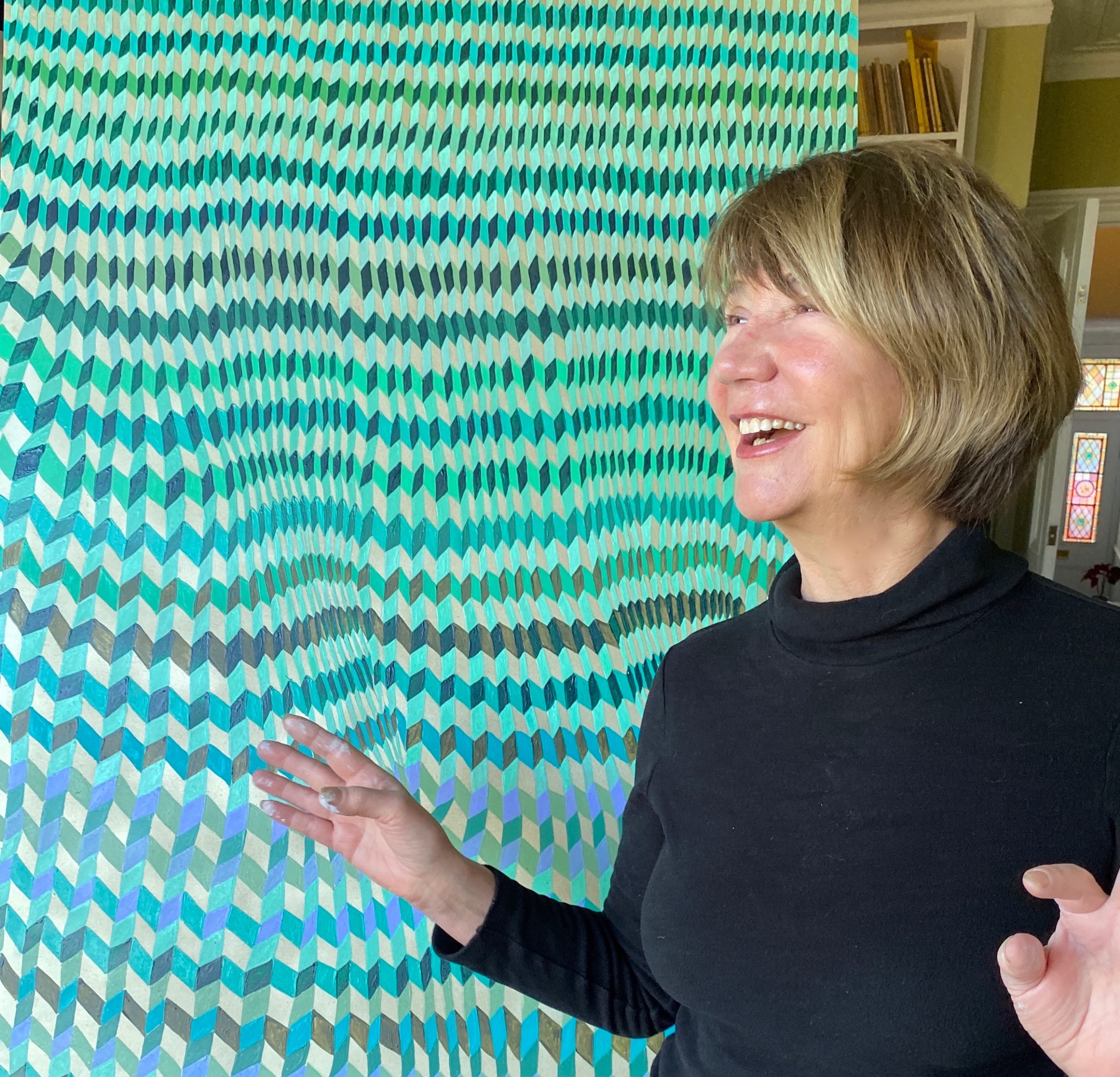
What scale do you work on, and does this vary from series to series?
The size of the painting has always been dictated by the subject matter, so typically work has ranged from the small domestic scale to pieces as large as 4 metres. It is interesting how circumstances will inevitably influence scale – this can lead to unexpected developments. Being forced to move my practice from my studio to a bedroom during lockdown meant that for practical reasons everything had to be scaled down and I could no longer work with oil. The results were the Drawing Breath series and the expansion and development of the Blue World series. I was offered a mini residency at the end of 2020 in a large gallery space which is where I made Hold My Breath, a 450 cm long scroll breath painting. The lack of affordable space in London is a real problem, especially for young artists. I coordinate the Graduate Studio Award at the Lewisham Arthouse (an artist’s co-operative where I have a studio) and I am continually in awe of the inventiveness and resilience of young artists and how they adapt to circumstances
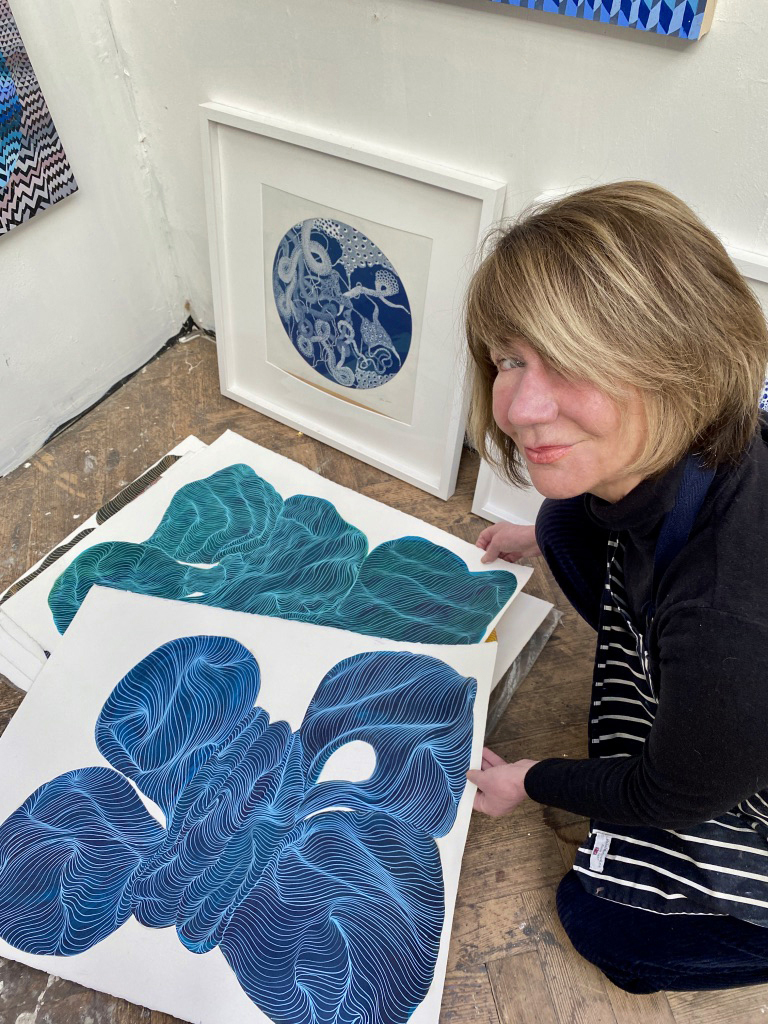
What does the future hold for you as an artist?
I am hoping to scale up the Breath Embrace series to emphasis the sculptural qualities of these images. As I mentioned earlier, I’m interested work that strides 2d and 3d and want to return to and develop an older series of work Excavations, which involves carving into layers of paint. In 2020 I was offered another residency and exhibition in the Anhui Province of China. If travel restrictions and circumstances allow, I would love to be able to take up the offer in 2022.
Image Credit: Rosalind Willett
